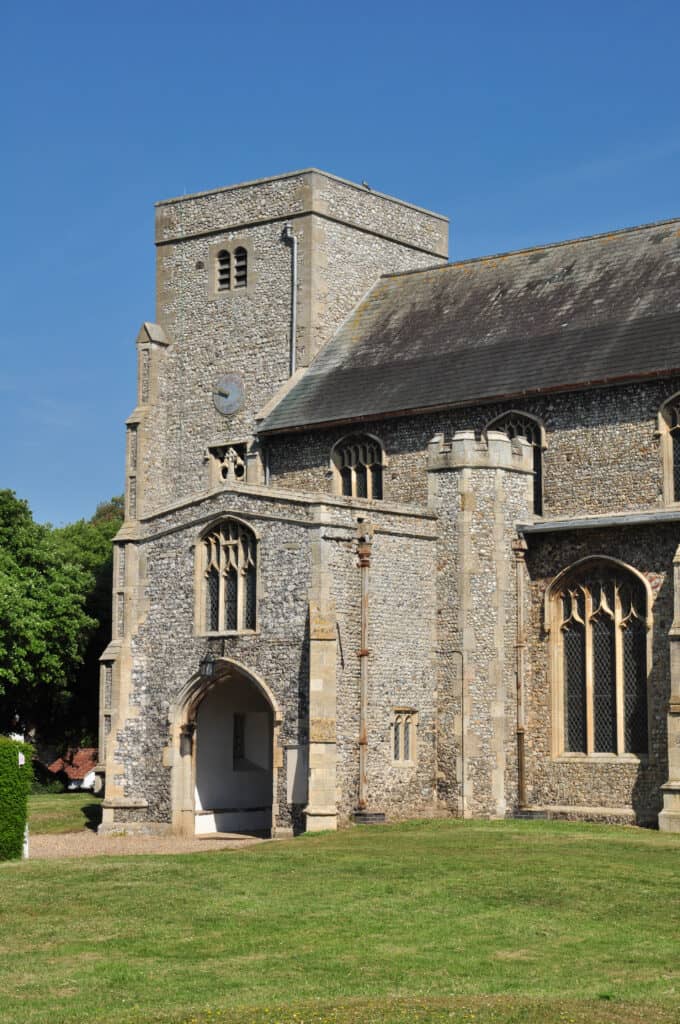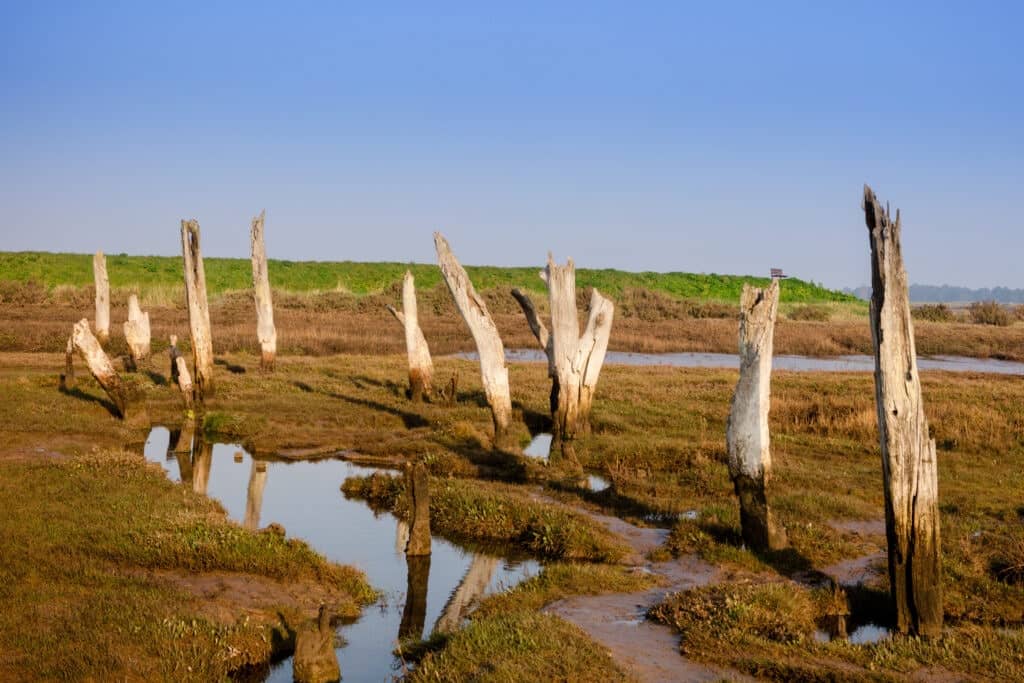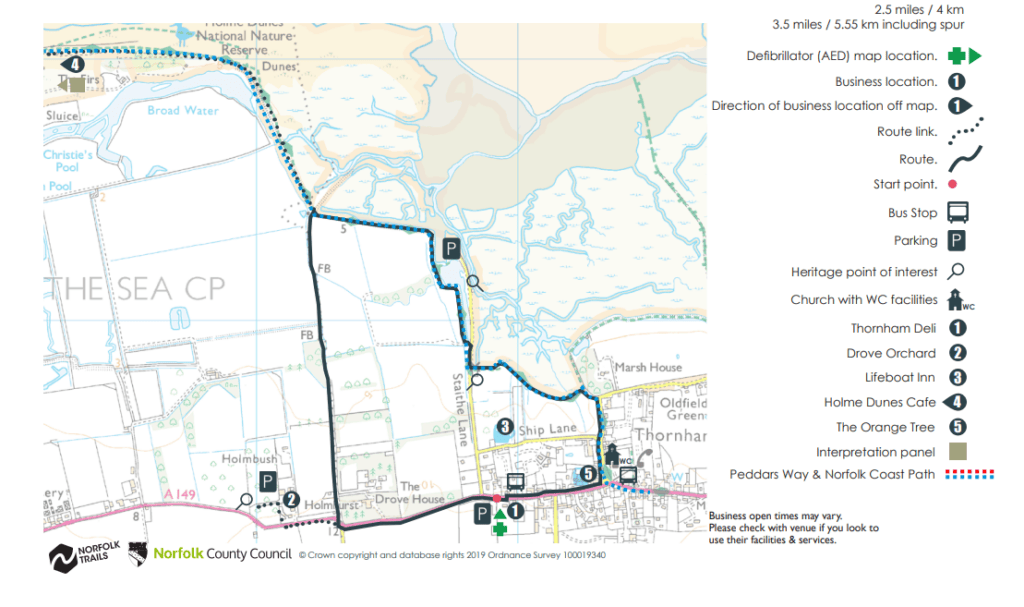Picture the Industrial Revolution. Does Norfolk spring to mind? Many think industrial history bypassed this rural region but Norfolk’s industrial heritage is dotted all across the landscape, from water and windmills to railways, canals, timber plantations, chalk works, sand quarries and factories for making fertiliser, brushes or canning fish.
True, no coal mines opened in Norfolk, but there were coal merchants. Nathaniel Woods was last to use the port at Thornham. His ship, the Jessie Mary, left packed with grain and returned with coal. Her last voyage was in 1914, but Nathaniel’s coal barn still stands on Thornham harbour, although the granary was demolished after the great flood of 1953. There’s a dedication to Nathaniel on the lych-gate at All Saints’ Church.
The church was renovated in part thanks to donations from another enterprising and socially progressive local. Edith Ames Lyde founded the Thornham Art Ironworks in 1887 to provide entertainment, employment and training for villagers. Renowned for highly decorative pieces such as signs, railings, balconies, fire screens and weathervanes, the works made gates and lamps for Sandringham and other great estates including Balmoral Castle, plus royal commission for exhibitions across Europe.
Edith died on a design research trip in Shanghai in 1914 and that fateful year led to most employees becoming casualties of the First World War. In 1920 the Ironworks closed. You can see a sign produced at Thornham Ironworks hanging outside The Orange Tree, still advertising the pub’s original name, The Kings Head.



